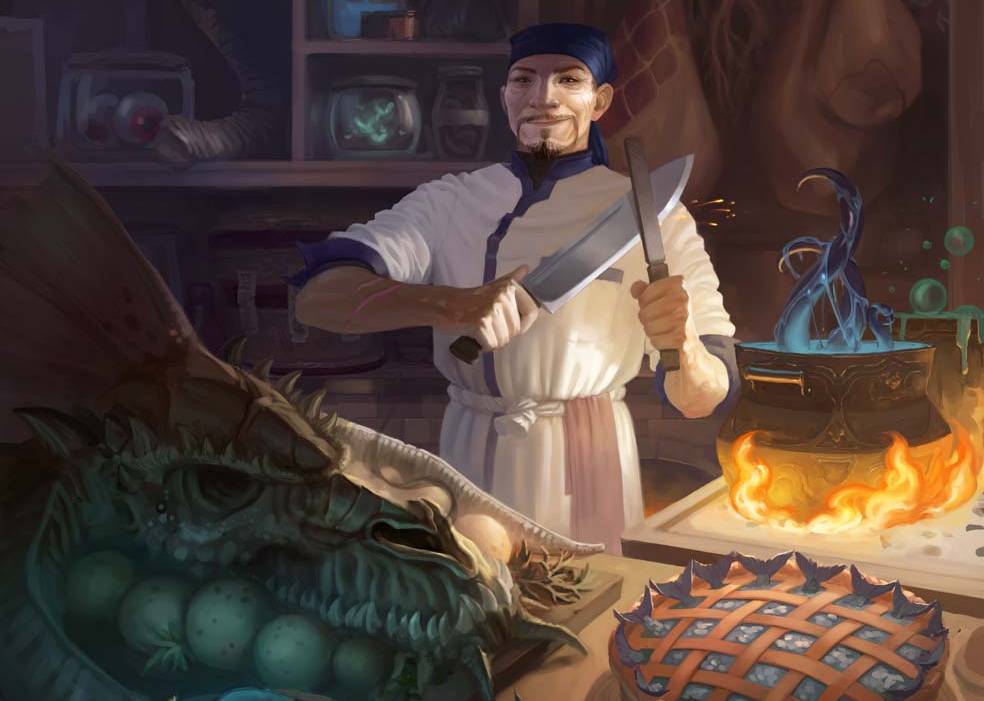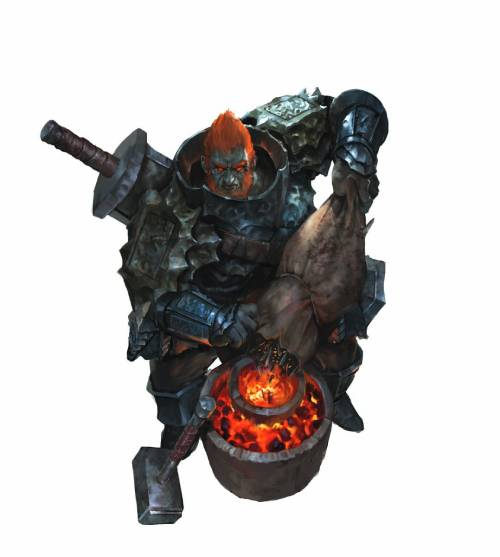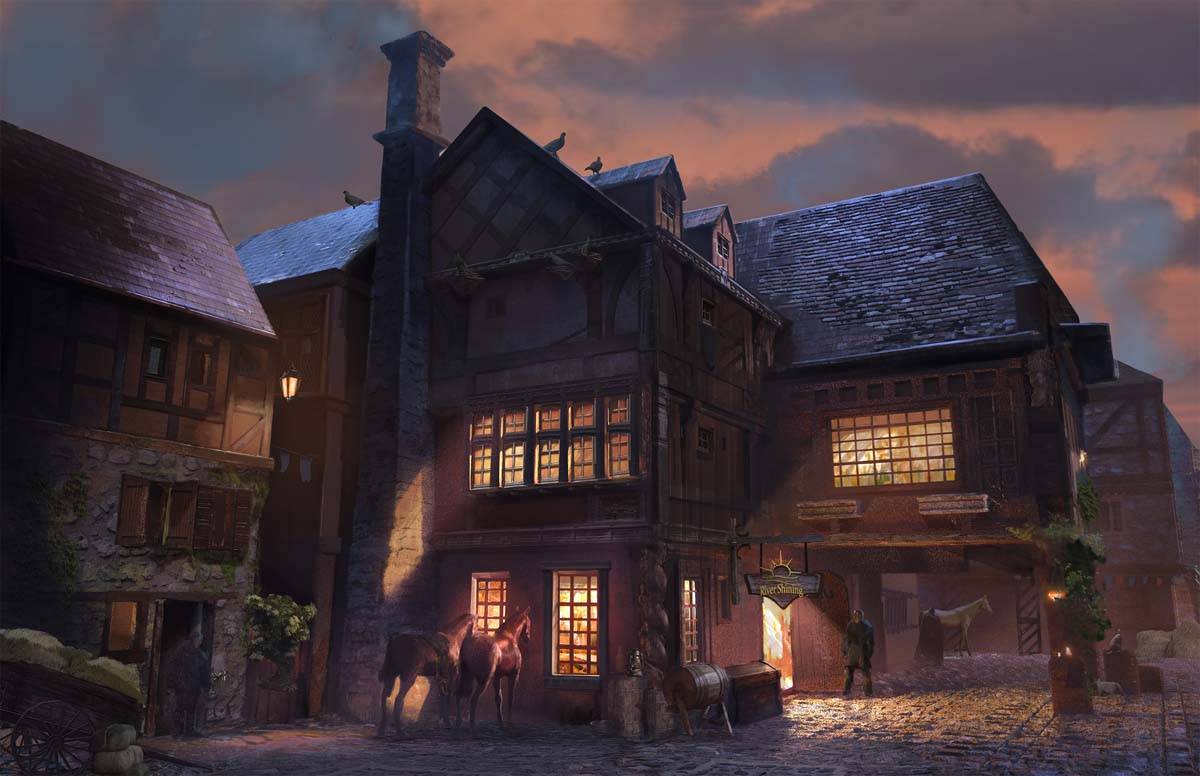Hope you’re hungry for some adventure because Heroes’ Feast: Saving the Children’s Menu is going to tantalize your taste buds and test your tactical talents! Available for $4.99, this one-shot adventure for 10th-level characters will take your party on an adventure to recover rare ingredients for a tavern’s beloved dish, and they might just save the day along the way.
Let’s dig in to see what this new adventure is all about and to see why running higher-tier adventures can be a blast.
- What Is Heroes’ Feast: Saving the Children’s Menu?
- The Joy of High-Level Adventures
- Running High-Level Adventures as a Dungeon Master
Heroes’ Feast: Saving the Children’s Menu is Ready in Maps
Save prep and play more with Maps! This tool is loaded with all the maps and tokens in Heroes’ Feast: Saving the Children’s Menu, enabling DMs to prep their sessions in a matter of minutes and invite their players to play along!
What Is Heroes’ Feast: Saving the Children’s Menu?

Heroes’ Feast: Saving the Children’s Menu is an adventure based on a recipe in the upcoming sequel to the official D&D cookbook, Heroes’ Feast Flavors of the Multiverse, and it includes the recipe if you want to reward your party’s adventuring. It takes players on a gastronomic quest, blending culinary creativity with high-stakes D&D adventuring.
This adventure is also written by D&D celebrity and legendary puzzle maker Deborah Ann Woll—known for playing Karen Page in Marvel’s Daredevil, The Defenders, and The Punisher series, as well as Jessica Hamby on HBO’s True Blood—so you know there’s going to be a perplexing logical conundrum somewhere in there.
The journey involves tracking down the mysteriously missing magical ingredients needed to create a town's favorite dish, leading players to investigate the source of these ingredients and figure out why their supply has been disrupted.
But, seeing as this is an adventure for 10th-level characters, you can probably guess this task won’t be as easy as it seems. Over the course of their journey, they’ll encounter challenges that are bound to raise the steaks.
Heroes’ Feast Flavors of the Multiverse
Heroes’ Feast Flavors of the Multiverse is the sequel to D&D’s official cookbook, Heroes’ Feast. Within its pages, you’ll find recipes from the Forgotten Realms to Ravenloft that will be a hit at the dinner table as well as the D&D table.
The Joy of High-Level Adventures

Higher-tier adventures give players and Dungeon Masters a chance to stretch their abilities and imagination. Not only do player characters get more powerful, but the threats they face become more grand and deadly.
Players Can Try New and Exciting Builds
Because they’re starting at 10th level, players will have the opportunity to try out builds that wouldn’t normally work at lower levels. Maybe they’ve wanted to try a grapple build that needs multiple feats to make it effective. Or perhaps they’ve got some wild multiclass shenanigans in mind. Either way, starting at 10th level means they don’t have to wade through nine levels of potential underperformance before their build starts to shine.
Also, at 10th level, players have access to some of the more potent abilities offered by their classes, and spellcasters can access 5th-level spells. This enables game-changing magic, like Raise Dead and Dominate Person, and offers martial characters a chance to show their combat prowess.
Bigger and Badder Baddies
High-level adventures mean Dungeon Masters get to blow the dust off legendary creatures or start looking at entire subsections of monsters that are too tough for more frail adventuring parties, like giants and dragons.
In Heroes’ Feast: Saving the Children’s Menu, your players will be going up against some hot-headed fire giants and may even encounter a bigger threat from Bigby Presents: Glory of the Giants. If you've ever wanted to try to smoosh your players into a paste—while giving them a fair chance at fighting back, of course—here's your opportunity!
Running High-Level Adventures as a Dungeon Master

For Dungeon Masters, high-level adventures may pose exciting challenges and opportunities, but they also require careful consideration for the party's enhanced abilities.
Setting Character Creation Guidelines
When setting up for Heroes’ Feast: Saving the Children’s Menu or any other high-level adventure, it's important to establish character creation guidelines that align with the parameters you, as the DM, want to play within.
As we said above, creating 10th-level characters can give players a lot of opportunities for unique and interesting character builds. But, especially for one-shots, it can also give the players access to builds that may trivialize or not fit the theme of the adventure you’re planning.
Before allowing the players to run off and create whatever their heart desires, consider the following:
- Are there any spells that you want to restrict, like resurrection or teleportation spells?
- What setting are you playing in, and how does that affect character species, backgrounds, or classes?
- Are there any power builds you don’t want to allow, like the coffeelock or sorcadin?
- What magic items, if any, are allowed?
With respect to the last point, you should also think about whether or not your players will be starting with magic items. The Starting at Higher Level section in the Dungeon Master’s Guide suggests that players in a “standard campaign” starting between 5th-10th level will have 500 gp plus 1d10 × 25 gp in addition to their normal starting equipment. If you give your players a chance to shop for magic items with this gold before getting into the session, it would be prudent to provide a list of approved (or banned) items.
Tips for Running the Session
Typically, the majority of time in D&D is spent in the first two tiers of play, levels 1-4 and levels 5-10. This means that getting to the 10th level is something that DMs might not have a ton of experience with.
Whether you’re a veteran DM or one that has just got situated in the DM’s chair, it’s good to go through some essential things to remember before running higher-tier adventures:
Be Prepared for Disruption. With 5th-level spells, characters with massive bonuses to skills, and powerful class abilities, there will be times that players will find a way around that encounter you were planning. It’s important to reward this ingenuity and let the players feel like the heroes they are. But, to ensure they still feel challenged, it’s also important to use up the store of resources each character can access.
Drain Party Resources. In D&D, every character has a finite amount of gas in the tank. Spellcasters have spell slots. Martial characters have depletable class abilities, like Ki or Action Surge. When playing at higher tiers, players can output vast amounts of damage, lock down enemies, and shake off some pretty severe hits, but they will eventually start to reach their limit. In these types of games, longer adventuring days with more combat, social, and skill encounters are crucial to even the playing field between players and monsters.
Get Tactical. With the amount of potent abilities at the party’s disposal, they’ll be able to handle more dramatic scenarios. Using ambush tactics to surprise the party, turning out the lights so they have to fight in the dark, and employing hit-and-run tactics are just some of the ways you can make monsters punch above their weight class.
Use Minions. Single monsters, even those with legendary resistance and legendary actions, tend to underperform against high-level characters. This is due to the number of character abilities that can lock down foes while the party wails away at them. By reducing the CR of the “big baddy,” you’ll leave space for more fodder in your encounter, which can spread the party’s focus, help break their concentration on debuffs, and soak damage.
Introduce Alternate Combat Objectives. This is something you can do in any tier of play, but by the time you reach higher levels, combat where you punch the opposing team till their hit points are reduced to 0 can feel especially stale. An example of alternate combat objectives in Heroes’ Feast: Saving the Children’s Menu tasks the players with preventing non-combatants from being hurt or kidnapped while trying to defeat the baddies at the same time, which can make the battlefield feel more dynamic.
Bon Appétit and Happy Adventuring!
Heroes’ Feast: Saving the Children’s Menu mixes epic D&D adventure with delicious cuisine from the Heroes’ Feast Flavors of the Multiverse cookbook. It's a recipe for adventure and high-stakes storytelling, perfect for foodie fighters, mixologist mages, and dice-rolling gourmands.
If you’re looking for even more delicious content, check out Dungeons & Dragons: Adventures, the new free digital TV channel on Amazon Freevee and Plex. Among classic favorites, like the animated 80’s Dungeons & Dragons cartoon, you’ll also find new programming, like Heroes’ Feast, a show hosted by “Chief Mike” Haracz and dedicated to the dishes, desserts, and cocktails from Heroes’ Feast cookbooks.
Mike Bernier (@arcane_eye) is the founder of Arcane Eye, a site focused on providing useful tips and tricks to all those involved in the world of D&D. Outside of writing for Arcane Eye, Mike spends most of his time playing games, hiking with his girlfriend, and tending the veritable jungle of houseplants that have invaded his house.







